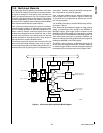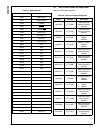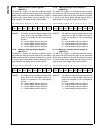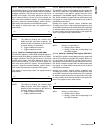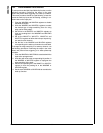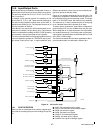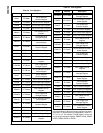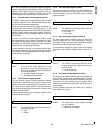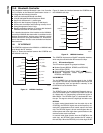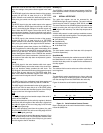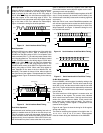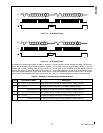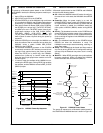
69 www.national.com
CP3BT26
All of the port registers are byte-wide read/write registers,
except for the port data input registers, which are read-only
registers. Each register bit controls the function of the cor-
responding port pin. For example, PGDIR.2 (bit 2 of the
PGDIR register) controls the direction of port pin PG2.
14.1.1 Port Alternate Function Register (PxALT)
The PxALT registers control whether the port pins are used
for general-purpose I/O or for their alternate function. Each
port pin can be controlled independently.
A clear bit in the alternate function register causes the cor-
responding pin to be used for general-purpose I/O. In this
configuration, the output buffer is controlled by the direction
register (PxDIR) and the data output register (PxDOUT).
The input buffer is visible to software as the data input reg-
ister (PxDIN).
A set bit in the alternate function register (PxALT) causes
the corresponding pin to be used for its peripheral I/O func-
tion. When the alternate function is selected, the output
buffer data and TRI-STATE configuration are controlled by
signals from the on-chip peripheral device.
A reset operation clears the port alternate function regis-
ters, which initializes the pins as general-purpose I/O ports.
This register must be enabled before the corresponding al-
ternate function is enabled.
PxALT The PxALT bits control whether the corre-
sponding port pins are general-purpose I/O
ports or are used for their alternate function by
an on-chip peripheral.
0
– General-purpose I/O selected.
1 – Alternate function selected.
14.1.2 Port Direction Register (PxDIR)
The port direction register (PxDIR) determines whether
each port pin is used for input or for output. A clear bit in this
register causes the corresponding pin to operate as an in-
put, which puts the output buffer in the high-impedance
state. A set bit causes the pin to operate as an output, which
enables the output buffer.
A reset operation clears the port direction registers, which
initializes the pins as inputs.
PxDIR The PxDIR bits select the direction of the cor-
responding port pin.
0
– Input.
1
– Output.
14.1.3 Port Data Input Register (PxDIN)
The data input register (PxDIN) is a read-only register that
returns the current state on each port pin. The CPU can
read this register at any time even when the pin is config-
ured as an output.
PxDIN The PxDIN bits indicate the state on the cor-
responding port pin.
0
– Pin is low.
1 – Pin is high.
14.1.4 Port Data Output Register (PxDOUT)
The data output register (PxDOUT) holds the data to be
driven on output port pins. In this configuration, writing to
the register changes the output value. Reading the register
returns the last value written to the register.
A reset operation leaves the register contents unchanged.
At power-up, the PxDOUT registers contain unknown val-
ues.
PxDOUT The PxDOUT bits hold the data to be driven
on pins configured as outputs in general-pur-
pose I/O mode.
0
– Drive the pin low.
1 – Drive the pin high.
14.1.5 Port Weak Pull-Up Register (PxWPU)
The weak pull-up register (PxWPU) determines whether the
port pins have a weak pull-up on the output buffer. The pull-
up device, if enabled by the register bit, operates in the gen-
eral-purpose I/O mode whenever the port output buffer is
disabled. In the alternate function mode, the pull-ups are al-
ways disabled.
A reset operation clears the port weak pull-up registers,
which disables all pull-ups.
PxWPU The PxWPU bits control whether the weak
pull-up is enabled.
0
– Weak pull-up disabled.
1
– Weak pull-up enabled.
7 0
PxALT
7 0
PxDIR
7 0
PxDIN
7 0
PxDOUT
7 0
PxWPU



